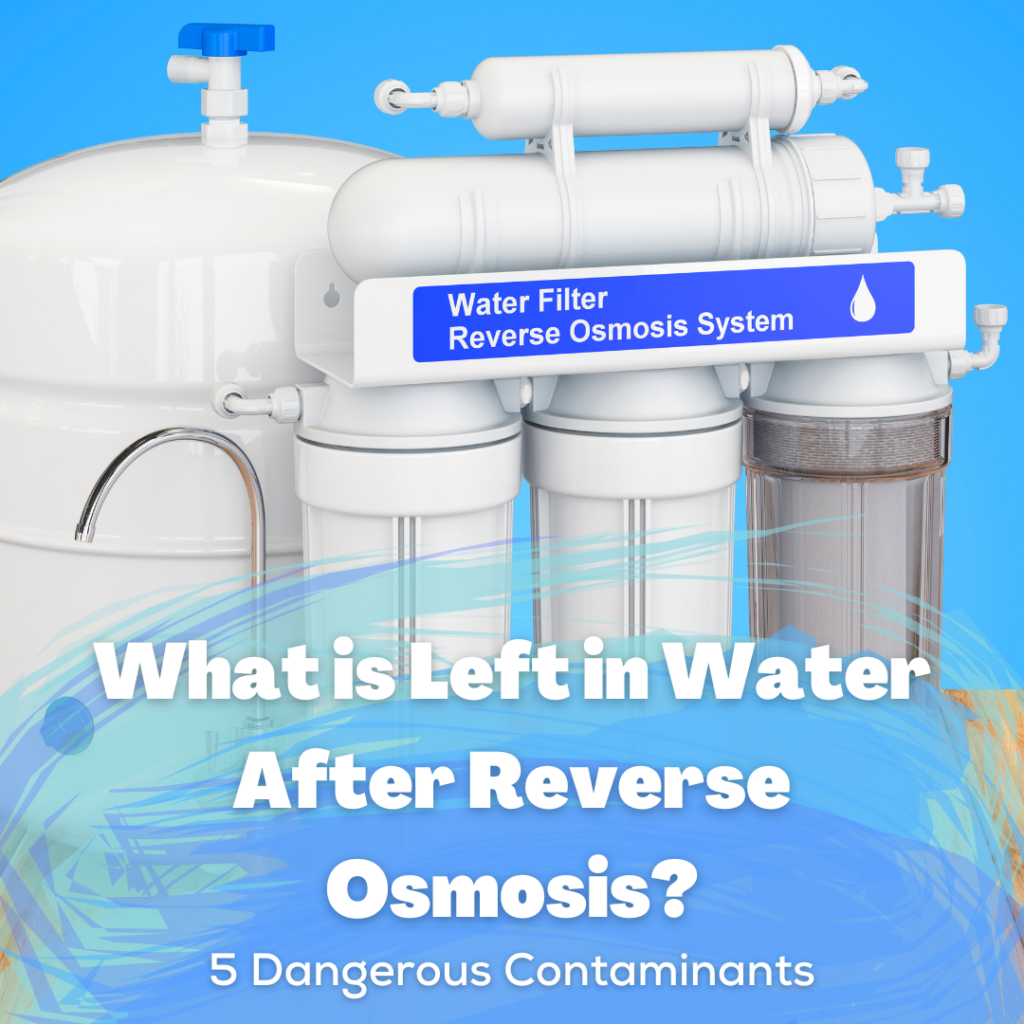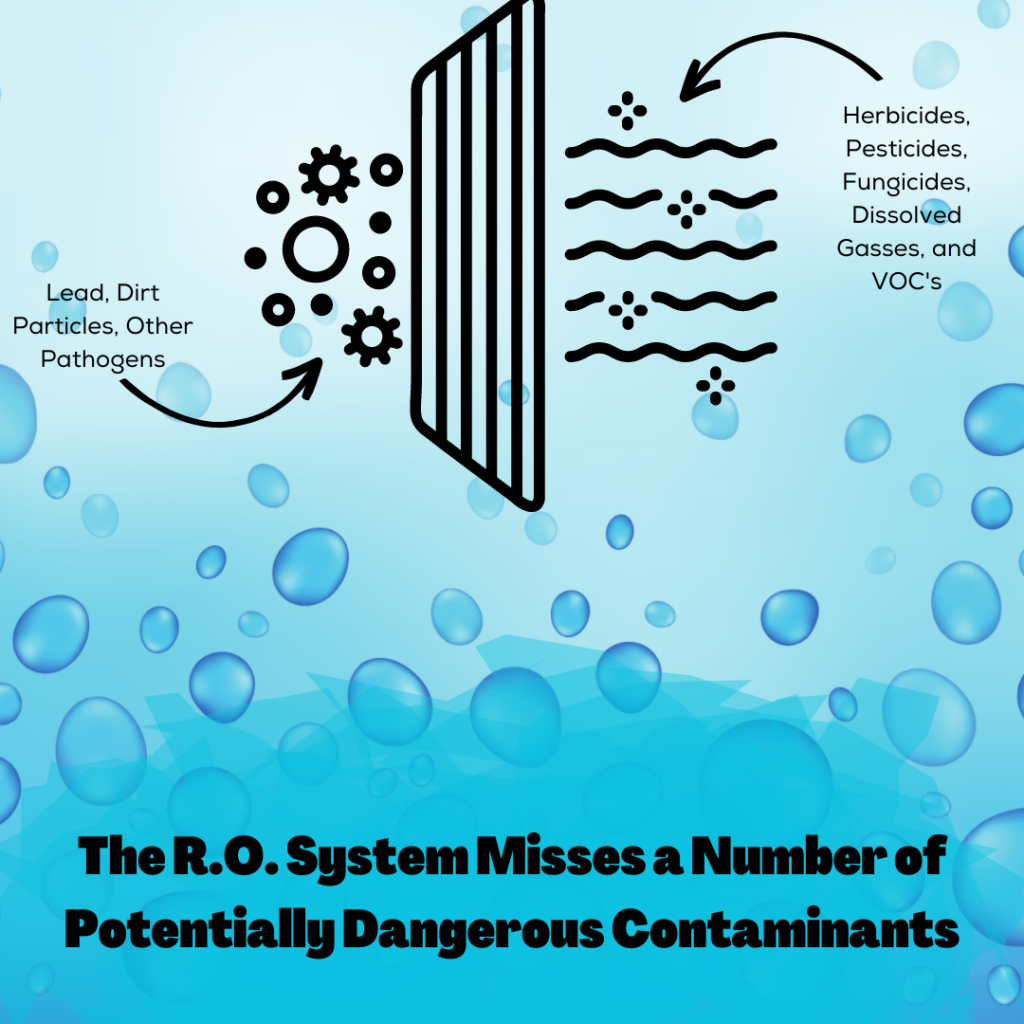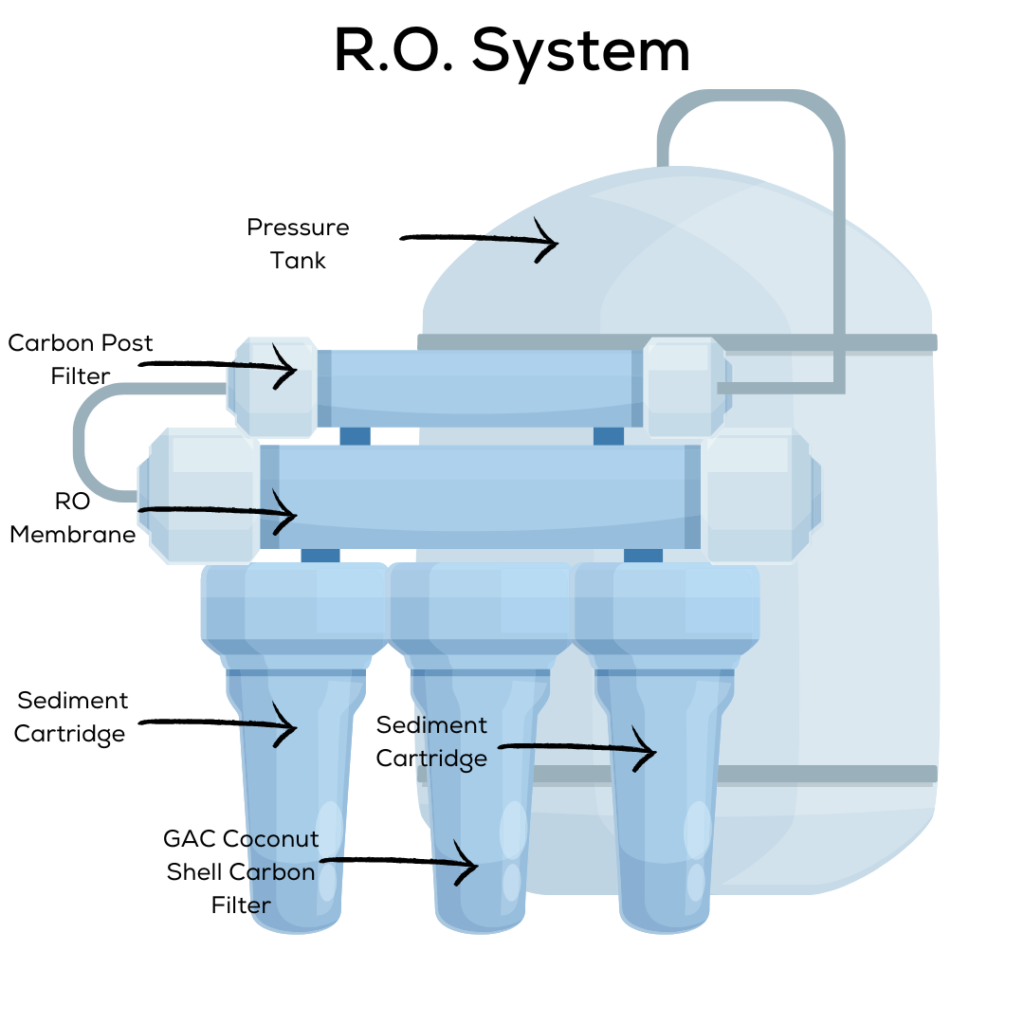What is Left in Water After Reverse Osmosis? (5 Dangerous Contaminants)
According to WHO, at least 2 billion people drink contaminated water daily. And to make matters worse, it is projected that 50% of the world’s population will live in water-stressed areas by 2025. This underscores the need of purifying your water to make it safe for drinking and food preparation – and reverse osmosis seems to be the de facto water purification method.
But what is left in water after reverse osmosis? Does reverse osmosis actually work?
Reverse osmosis will often leave behind herbicides, pesticides, dissolved gasses such as hydrogen sulfide, agricultural treatment products such as fungicides, organic chemicals such as benzene, and other volatile organic compounds. Adding a carbon filter to your reverse osmosis system will allow it to remove most of what is left behind to produce cleaner, safer water.
Read on to learn more about which contaminants can’t be removed by reverse osmosis and what reverse osmosis DOES remove effectively on its own.

What is Left in Water After Reverse Osmosis? (5 Contaminants)
In the world of filtered water, no single filter type can remove every single contaminant on its own. In fact, the best water filtration systems rely on a network of different filtering technologies in order to effectively remove bacteria, viruses, chemicals, heavy metals, and more from our drinking water.
So, what IS left in water after reverse osmosis? Although reverse osmosis filtration systems are excellent for removing physical particles and heavy metals, they do a poor job of removing:
- Herbicides
- Pesticides
- Fungicides
- Dissolved gasses
- Volatile organic compounds

Herbicides
Herbicides are used to curb the growth of weeds and other undesirable forms of flora. Some of the most common herbicide brands are Round-Up and Brush-Be-Gone. When we use these chemicals, they seep into the soil and later end up getting washed into our rivers and streams through run-off.
If you’re conscious of the various contaminants that can end up in drinking water, you’ll want to make sure you invest in the right filtration system. The best way to eliminate herbicides from drinking water is by using granulated carbon filters. If you are looking to install a reverse osmosis system, go for one that uses carbon filters, and it will get rid of the herbicide contaminants in your water.
Pesticides
The pesticides we use to eliminate insects and critters will inevitably end up in our drinking water as well. As rainwater washes them from the crops, they percolate through the soil and into the groundwater. Some get washed away into the rivers and streams.
A survey of 139 municipal water systems that was conducted by the EPA in 2004 found the presence of at least one pesticide in each of them.
Fungicides
Even though fungicides are not as toxic to humans as herbicides and pesticides, they still pose a significant threat. For instance, they are known to cause skin and eye irritation, and when consumed, they can cause throat irritation that could result in sneezing and coughing.
Dissolved gasses
Water contains various dissolved gases like oxygen, nitrogen, and carbon dioxide. These dissolved gases keep water at equilibrium with air. However, other undesirable gases like hydrogen sulfide can often be found in water. Hydrogen sulfide is usually a by-product of bacteria activity. Even though is harmless, the gas has a foul smell, and it’s a compound you’ll want to remove from your water. These gases often surpass the filtration system offered by reverse osmosis.
Volatile organic compounds
Volatile organic compounds (VOCs) are present in everyday products like pest sprays, paint thinners, etc. These VOCs cannot be broken down by bacteria, leaving the septic tank intact and percolating into the groundwater.
VOCs are just as small as oxygen molecules and will, therefore, easily pass through the reverse osmosis membrane. However, a carbon filter will easily trap and filter them out of the water.
If you want a filter that will effectively remove the above-named contaminants, you may want to get a system that uses a carbon filter. Most modern RO systems now incorporate carbon filters to ensure they will remove all impurities.
I would recommend going with a 3-stage, 5-stage, or 7-stage RO system. If you’d like to read a more detailed explanation of the 3-7 different stages, refer to this link.
Additionally, an RO system can remove too many essential minerals from your drinking water, resulting in some negative health effects. Though water is not typically a primary source of minerals, the jury is still out on whether or not the mineral loss from drinking RO water is truly harmful or not.
Watch the resource below to learn more about this phenomenon so you can make the most informed decision possible with regard to your drinking water.
What does reverse osmosis remove?
Reverse osmosis does a great job of removing most inorganic compounds and up to 99% of bacteria. Here are some common contaminants you can eliminate from your water using a reverse osmosis system.
- Lead
- Dirt particles
- Pathogens

Lead
Even though the municipalities typically do a great job of treating water, it can still get lead contamination through plumbing. Plumbing fixtures, lead pipes, and faucets are the main culprits to blame for lead contamination in household water.
Consuming water that is contaminated with lead can result in short and long-term effects. In the short term, you may experience constipation, fatigue, and general body weakness. If you keep drinking water contaminated with lead for a long time, you could suffer severe health issues such as infertility, hypertension, depression, and heart disease.
Reverse osmosis is a great method for filtering out lead that may contaminate drinking water from the tap.
Dirt Particles
Dirt particles may not necessarily be harmful to your health. Nonetheless, they affect the taste and quality of water, and it is best to filter them out. Thankfully, the dirt particles are too large to go through the RO membrane and will therefore be removed from the water by an RO system.
Some systems (like the 3-stage RO) have a prefiltration stage specifically for removing dirt particles and other debris
Pathogens
Pathogen contamination is rampant, and these agents are the leading causes of most water-borne diseases like diarrhea, typhoid, dysentery, cholera, and polio.
RO systems are, however, very effective in dealing with pathogen contamination as they remove up to 99.9% of pathogens from the water.
Final thoughts on reverse osmosis contaminants
Now that you know exactly what is left in water after reverse osmosis, you should be better informed when selecting a water filtration system in the future. Even though reverse osmosis systems are very effective in eliminating the most common contaminants in water, they may not necessarily be best suited for other contaminants like VOCs, dissolved gases, pesticides, etc.
However, some RO systems now come with carbon filters, giving them the added advantage of filtering out what an ordinary RO membrane wouldn’t. To put it plainly, an RO system with a carbon filter will remove all the common contaminants in drinking water.
Let Us Know How We’re Doing!
Did this expertly prepared resource answer your question?
Do you have another question about home maintenance, home improvement projects, home appliance repair, or something else?
Get more information, send in questions and keep the discussion going by contacting the I’ll Just Fix It Myself company customer service team at at 1-800-928-1490 or Email us at [email protected]
